La Belle was a French ship that sank in Matagorda Bay in 1685 after running aground in a storm. She was then forgotten for nearly 300 years, until Kathleen Gilmore of Southern Methodist University analyzed historical accounts pertaining to the French expedition of which the ship had been a part, and based on this historical documents were able to say with some certainty in which area La Belle might be found.
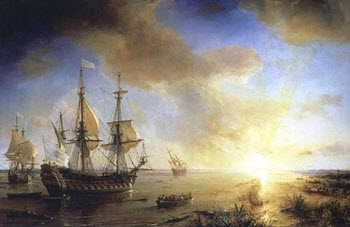 After several other historical investigations had been carried out to more precisely pinpoint the spot where La Bella sank, the Texas Historical Commission organized a magnetometer survey in June 1995. The following month, divers where sent to the highest priority location, and they reported feeling musket balls on the seafloor.
After several other historical investigations had been carried out to more precisely pinpoint the spot where La Bella sank, the Texas Historical Commission organized a magnetometer survey in June 1995. The following month, divers where sent to the highest priority location, and they reported feeling musket balls on the seafloor.
A major excavation was launched by the state of Texas. It took approximately one year to recover the shipwreck and gather over a million artifacts. The ship and many of these artifacts are now on display in The Corpus Christi Museum of Science and History. La Belle was a barque-longue with three masts and a cargo capacity of 40-45 tons. With a relatively shallow draft of about 8 feet, she was highly maneuverable ship designed for navigating the Mississippi River.
Where is the lost cannon?
The shipwrecked La Belle might have been known to local watermen before it was formally discovered by historians and archaeologists. During the excavation, it became evident to the archaeologists that one of La Belle’s four bronze cannons had been removed from her prior to the wreck being officially discovered in 1995. The whereabouts of this cannon remains a mystery, especially since there are no other clear signs of wreck plundering. It is possible that a local shrimper might have netted the cannon by accident.
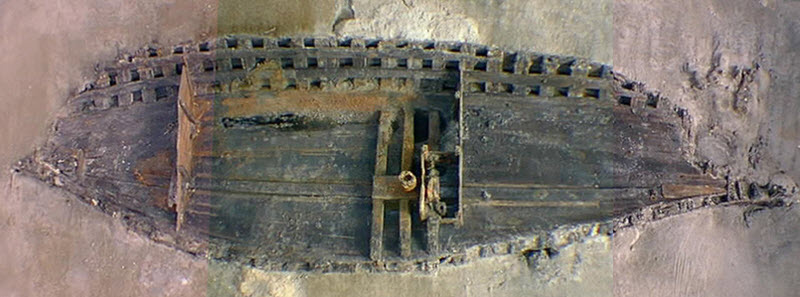
About Matagorda Bay
Matagorda Bay is a large estuary bay on the Texas coast, divided between the counties of Calhound and Matagorda. The estuary bay is separated from the Gulf of Mexico by the Matagorda Peninsula.
During the days of the conquistadors, the bay and its surroundings were called Espíritu Santo and Costa y Bahía de San Bernardo by the Spanish, and Alonso Álvarez de Pineda included it on one of his maps as early as the 1510s.
Matagorda Bay, which serves as the mouth of numerous streams, is found approximately 80 miles northeast of Corpus Christi. Two of the most notable rivers that empty into the estuary are Colorado and Lavaca.
Indianola was a major port town in the estuary before the port was destroyed by two hurricanes in the late 1800s. Today, it is just a ghost town.
In 1934, local citizens disliking the large amounts of sediment dumped into East Matagorda Bay by the Colorado River decided to change the course of the River to bypass East Matagorda Bay on its way to the Gulf of Mexico. In 1992, the river was diverted back to the bay again.
The Lost Colony of Fort St. Louis
After missing the entrance to the Mississippi River, French explorer Robert de La Salle founded the ill-fated colony of Fort St. Louis along the shore of Matagorda Bay in 1685. Soon, half of the colonists have succumbed to disease, and the other half – except the children – were killed by the Karankawa people who lived there. The Native Americans kept the children until Alonso De León and Domingo Terán de los Ríos from Spain arrived and fetched them. The colony was since then referred to as a lost colony.
About La Belle
 Background
Background
In 1681, the French nobleman René-Robert Cavelier, Sieur de La Salle lauchned an expedition down the Mississippi River from New France. The aim was to find a route to the Pacific Ocean, but La Salle ended up in the Gulf of Mexico instead.
On his returned to France, La Salle argued that a small number of French colonists would be enough to hold the Mississippi River valley – the valley that he called Louisiana in honor of his king – if they enlisted the help of the approximately 150,000 Native Americans in the region that were angry over Spanish enslavement. Louisiana could then serve as a base for attacking Spain’s Nueva Vizcaya and put its rich silver mines under French control.
After Spain declared war on France in 1683, Louis XIV agreed to La Salle’s plan.
The big ship and the small ship
La Salle planned to sail in a big ship from Europe to New France, then journey overland to Illinois Country, and then sail in a smaller ship down the Mississippi River.
The French king gave La Salle the use of two ships: Le Joly and La Belle. La Belle was built as a kit; the pieces were intended to be loaded onto Le Joly and then carried overland to the Mississippi River, where they would be assembled.
La Salle’s original plan was never carried out, because the king told La Salle to instead sail directly from Europe to the Gulf of Mexico, without going to New France first. Now, La Salle only needed the big ship – Le Joly – but he decided to bring La Belle along anyway to be able to carry more cargo. La Salle was therefore assembled in France in less than two months.
The voyage
La Salle left France with four ships on July 24, 1684.
- Le Joly (a 36-gun man-of-war)
- L’Aimable (300-ton storeship)
- La Belle (a barque-longue)
- St. Francois (a ketch)
Nearly 300 people went with him; both men, women and children.
St. Francois was captured by Spanish privateers en route to the North American mainland. The other three ships continued their search for the Mississippi River delta, but failed to find it. The expedition suffered from a combination of inaccurate maps and La Salle’s previous miscalculation of the latitude of the river mouth. They ships also over-corrected for the east-flowing currents and eventually landed at Matagorda Bay in Spanish Texas, roughly 400 miles west of the Mississippi river mouth.
Matagorda Bay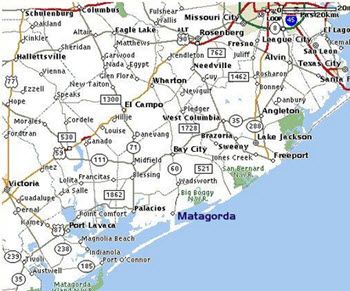
The three ships reached Matagorda Bay in early 1685. La Belle, being such a small ship, could navigate the pass into the bay without incident, but the big L’Aimable was grounded on a sandbar. Due to a bad storm, only food, cannons, powder and a small amount of merchandise could be recovered from L’Aimable. Eventually, she sunk.
Le Joly was never intended to stay with the colonists; it was a man-of-war ship hired to protect them on their journey. When the expedition had landed in Matagorda Bay, Le Joly and her crew went back home to France again, leaving the colonist with just one ship: La Belle.
The colonists established Fort Saint Louis on a bluff overlooking Garcitas Creek, approximately 50 miles from their original camp site.
A new expedition with La Belle
Fort Saint Louis was used as a base for the colonists exploration of the region. Typically, their excursions were kept short, but in October 1685, La Salle decided to use La Belle for a longer expedition and loaded her with the following cargo:
- 4,800 livres of dried meat and bacon
- 2,000 livres of gold, arms and tools
- 108 hundredweights of bread and flour
- 90 hundredweights of powder and lead
- 10 casks of wine and brandy
- 8 pigs
- 3 casks of vinegar
- 2 livres of butter
- Salt
- Oil
- Cannons, petards
- Forge
La Salle took 77 people with him, including La Belle’s crew of 27 sailors. This mean that only 34 men, women and children were left at Fort Saint Louise.
Most of the 77 people didn’t travel on La Belle. Instead, they travelled in canoes while La Belle followed further off the coast.
The expedition was plagued by problems. Several people died after eating a toxic plant, including La Belle’s captain Canil Maraud. Soon thereafter, another group of expeditioners were killed by Native Americans (Karankawas), and this group included the newly appointed captain of La Belle, former pilot Eli Richaud. La Salle refused to give up the expedition; his goal was to reach the Mississippi River. In January 1686, he left La Belle roughly 30 miles from Fort Saint Louis, taking 20 men with him to walk overland to the Mississippi River. Pierre Tessier, the former second in command, was now in charge of La Belle.
La Belle is wrecked
While La Salle and his 20 men were away from La Belle, the stored drinking water began to run out for the people left on the ship. In order to find water, Tessier sent his five best remaining sailors ashore in the only longboat. By nightfall, they could be seen struggling against a strong wind as they tried to reach La Belle, but they never made it back to her.
Desperate, the men on La Belle drank wine to quench their thirst. Soon, several of them were dead. Tressier decided that they could wait no longer for La Salle to return; they had to go back to Fort Saint Louis.
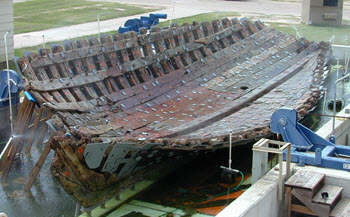 As La Belle got underway, the crew was surprised by a storm. Since the five best sailors had been sent away in the longboat, and several of the remaining men onboard had died, the crew now consisted of a small group of comparatively unskilled seafarers that struggled in vain to keep control over La Belle in the tumultuous weather. The second anchor had been lost, and La Belle started drifting to where ever the wind blew her. Soon, she ended up aground at the southern end of the bay, roughly a quarter of a mile from the mainland.
As La Belle got underway, the crew was surprised by a storm. Since the five best sailors had been sent away in the longboat, and several of the remaining men onboard had died, the crew now consisted of a small group of comparatively unskilled seafarers that struggled in vain to keep control over La Belle in the tumultuous weather. The second anchor had been lost, and La Belle started drifting to where ever the wind blew her. Soon, she ended up aground at the southern end of the bay, roughly a quarter of a mile from the mainland.
The crew stayed in the grounded ship until the wind abated, and then built a raft from planks and barrels. Two men made an attempt to reach the shore in the raft, but it was poorly built and broke up in the waves, drowning them both. The remaining crew built a new and improved raft, and managed to reach the peninsula on it.
The crew stayed close to shore for a few days, making daily trips back to La Belle to salvage what they could, including barrels of flour, casks of wine, clothes, some of La Salle’s papers, and some glass beads and other items that could be used for trading. They couldn’t salvage everything though, because after a few days a strong southerly wind drove La Belle into the muddy bottom, leaving only her read deck above the waterline.
The survivors stayed on the peninsula for three months, since they didn’t dare to cross Karankawa territory to get back to Fort Saint Louis. The group consisted of Tessier, a military officer, a regular soldier, a servant girl and a small boy.
One day, a small Indian canoe washed ashore, making it possible for the group to return home to the fort by paddling across the bay.
What happened to La Salle and his group?
La Salle and his group spend three months searching for the Mississippi River before they returned to where La Belle should be waiting for them. When they didn’t find La Belle, they walked back to Fort Saint Louis.
Aftermath
The colonists at Fort Saint Louis now had no ship, and were surrounded by hostile Spaniards and Karankawas. Reaching out to the French colonies in the Caribbean Sea was not possible.
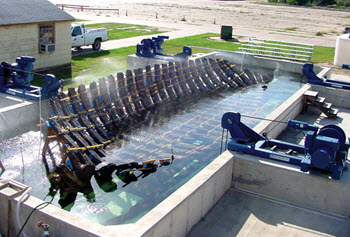 In early April 1686, a Spanish expedition lead by Captain Martin de Rivas and Captain Pedor de Yriarte reached Matagorda Bay. They explored the area using canoes, and found what they described as a broken ship with three fleur-de-lys on her stern. It was La Belle. The Spaniards salvaged two swivel guns, five cannons and some cordage from La Belle, and used her masts to make oars. They also manage to get hold of her anchor.
In early April 1686, a Spanish expedition lead by Captain Martin de Rivas and Captain Pedor de Yriarte reached Matagorda Bay. They explored the area using canoes, and found what they described as a broken ship with three fleur-de-lys on her stern. It was La Belle. The Spaniards salvaged two swivel guns, five cannons and some cordage from La Belle, and used her masts to make oars. They also manage to get hold of her anchor.
By early January 1687, fewer than 45 people lived in Fort Saint Louis. La Salle decided that their only hope of survival was to trek overland to get help from New France, so he selected 16 people that would go with him. The rest remained in Fort Saint Louis; it was chiefly women, children and unfit men, plus seven soldiers and three missionaries.
Strife within La Salle’s group caused one of this two nephews to be murdered on March 18, and La Salle himself was killed the following day when he approached the camp to investigate the disappearance of his nephew. The infighting also led to the death of several other group members. Two men left the group to join a group of Native Americans instead (the Caddo people). Only six of the original 17 people made their way to New France, and then eventually got back to Europe in the summer of 1688. They told Ling Louis of how the colony was suffering in Fort Saint Louis, but the king did not send any aid.
Many of the remaining people in the colony succumb to disease, and the rest were killed by the Karankawa – except for the children who were spared by the Karankawa and lived with them until they were fetched by the Spaniards.

